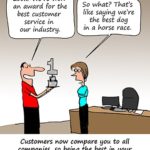FOUR MAIN CHANGE AREAS TO CONSIDER
There are four main points to address to reach an effective customer-centric operation, whether you embrace an omnichannel or multichannel contact center strategy. These are technology integrations, processes, staff training, and relevant reporting at the right time, to the right levels.
Technology Integrations
Today’s technology has the capability of delivering on either strategy for driving customer experience. In many cases existing technology infrastructure must be replaced or evolved to leverage the newer applications and integrations. Understanding the business strategy is key to determining any technology optimization and the impact of any changes.
For example, if you want customers to use their mobile smart device and leverage multiple channels simultaneously, then Wi-Fi enablement, use of QR codes with links to product information may be needed for a retail situation or health care. Reporting on the various contact points is then important to insure a good experience. It is not useful to offer a channel and have poor Wi-Fi that impairs the experience of the user. Remember that rendering on a cell phone is entirely different than when on a PC with more screen real estate.
In another example, if you want customers to call in for support, then technology should be available to help identify who you are, your status as an existing or new customer, and automatically provide the information to an agent. The agent should have the customer’s history and easy access to product, shipping, or other important customer information. Calls which get transferred or where incorrect information is provided will negatively impact your brand and likely drive customers elsewhere.
Common Questions to Consider: Do you need the technology integrations to be internal, external, or both? Are feeds from social media essential to discerning the voice of your customer, and if so which ones and what will you do with that data? Is your business offering products or services globally requiring multiple languages and if so where on the web, mobile apps, representatives, etc.? Ever witness a poor customer experience that when viral on social media that received no credible attention from the company? Without a trained, thinking approach to negative customer experiences be prepared to endure Death by Social Media.
Each of these integration points of technology potentially require reporting on the data. Without the data gathering, reporting, and analytics it is difficult to key in on the ones working or eliminate those that fail. Assume your customers are changing their consumption patterns all the time. Are you watching and tracking those changes?
Processes
Documented processes are a required foundation for optimal servicing of customers, as opposed to relying on tribal knowledge. Small, new businesses often don’t have documented processes and that is definitely not effective or sustainable for businesses who want to grow as a player in the global marketplace. Regardless of the customer service strategy used, processes need to be in place for helping shape the brand, train new staff, effectively manage, and plan growth regardless of the type of business. To prove this point, take your most valuable contact center agent with their tribal knowledge of your processes and send them home for a few days. Does the world implode?
Some of the processes used might be identical for external and internal users. Having one source of truth for the processes for both users is important to ensure updates are consistent and uniform. Processes should be routinely reviewed and expanded when needed. These should also be a part of the training for any new hires into the organization as it will simplify their training as well as allow the individual a place to return if needed. Some processes are only used infrequently while others may be department or team specific. Different activities may require a review of one or more processes.
For example, if you want to sell an enormous quantity of widgets then you create a marketing plan to fit that driver. It is essential to have either enough stock to meet the demand or realistic fulfillment guidelines if the marketing program is tremendously successful. No contact center staffing plan is going to cover for a supply chain problem so keep them in sync. Contact Center staff need to know exactly how to consistently respond to the requests, as does the website, or other ordering methods. Judy can’t say it will take two weeks to ship, while the website states ships in two days. The same is true with the knowledge base behind said widget. The specifications for it should be the same from the web or in the hands of a representative. Oh, if it is a complex widget did you properly brief the contact center folks on how to talk to it?
The data on the actual processes accessed and by who, inside or outside of the organization, can help identify any process which is out of date, missing, or incomplete. The data for processes can be effectively used to optimize the Contact Center strategy leveraged.
Staff Training
Staff training in handling Contact Center transactions is rarely a once and done. The inclusion of either the multichannel or omnichannel strategy training is key across the board. Knowing the right training aspects to apply is based on how much is changing from their existing workload, the desired experience for customers, and the tools you are providing to improve the staff’s experience.
If the tools the workforce is using, agents or knowledge workers, are not effective to answer the question of a customer, then a method needs to be in place to allow the user’s insights to providing operational change recommendations. Do users know which training modules they have completed or are yet to be completed? Do users have visibility to the customer’s journey in this specific contact and easy insights into prior contacts and activities? Are basic dashboards available to users on current contacts, key customers, and methods to make a positive customer impact?
It is impossible to manage staff unless you have a way to manage what they are doing and when they are doing it. The same is true of the leadership with the information portrayed in a higher level with easy access to the key milestone targets.
Relevant Reporting
Reporting of all interactions with customers, by channel and outcome, at a bare minimum is necessary to manage not only the human resources but also the channel access points. The reporting of key metrics are needed from a counting perspective, but the why or analytics of a change over time provide insights to success or failure as new channels are explored regardless of which strategy is adopted.
Traditional measurements of how many calls, busy hour call counts, short calls, average handle time, skill sets, and staffed agents are important to a degree. Better metrics however need to include repeat callers for the same issue, disjointed transactions like an email, then a webchat, then another email. The why it was necessary for the additional volumes of contacts from a single customer will open the avenues for change. The reason for the contact and the reason for failure on gaining the answer will allow the business to bridge the information for meaningful transactions. The successes also need to be measured. When did the flows work for the desired outcomes and when did they fail.
For example, many businesses want to push their customers to self-service first, as it is traditionally a cheaper resource compared to a human representative. That is an approach both strategic methods can use but carrying that information through the customer’s journey is essential to the experience. If that self-service experience is not being used because customers don’t like or understand the flow, the reporting on where customers opt out is important to know where to change. Unless you are a monopoly, better get used to catering to that ever-changing, increasingly impatient customer.
Technology exists today to offer rich and secure self-service experiences with engaging speech authentication enablement, but the flow of these transactions must be created to meet the requirements of the user. Customers today are mobile and often impatient so an automatic identification within the self-service flow is far more useful than please enter that 16-digit account number and add your secret PIN number while holding it up to your eye for a retina scan routine. Reporting on this must be detailed and tagged at each step of the call flow. The information on this level of reporting can be daunting so the analytics aspects which technology can deliver today help the group lead, supervisor, manager, and other leaders focus on the problem so a solution can be created.
Another similar example is the newer ChatBot enablement, with increased AI augmentation. How and where to introduce a ChatBot is only one aspect of enabling customers with a different method of self-service. Note that the Alexa or Siri voice activated service Bots tend to be more engaging than text based ChatBots and are considered more fun. Regardless of the Bot path selected, the use of a knowledgebase allows for a better information exchange and the Bot’s ability to learn how to respond requires reporting on each of those elements as well as the analytic aspect.
Business interactions require answers to many questions often from multiple levels within the organization. Did the customer opt-out due to a poor self-service application? Did the application satisfy them, and did users tell three friends about their great experience? Did the mobile app fail because the connection was poor or that it didn’t use enough emoji’s? Did the customer change channels because the first or second choice failed? (Note: With many consumers there is no second chance unless they already have a positive experience or you owe them a refund.) Are the changes in the interaction channels providing the best experience?
Reporting requirements must be reviewed and updated in lockstep with the technology adoption of the business. Reporting on a voice call or an email, is vastly different from reporting on the transaction overall or customer journey. The pluses and minuses of the journey will make the difference in ensuring the technology enablement is correct, processes aligned, and staff is correctly trained.
End Game
Lastly, the measurement of customer satisfaction is an avenue for consideration. Don’t wait to check on customer satisfaction AFTER your people throw the traveler off the plane. The ability to offer surveys and responses in the manner of customer preference is the first criteria. The length of the survey should be short, which means laser focused questions. The reporting on the number of surveys, types of surveys, and the responses are essential. Then from the data the analytics derived will direct the business on what changes to consider. Remember that change is inevitable so map your organization, so it adapts to the ebb and flow of consumer sentiment.
If you cannot measure the various elements of the contact center as you expand contact types, then you simply cannot manage your business or your resources. All are critical to long-term success.
Related Content:
- None Found




